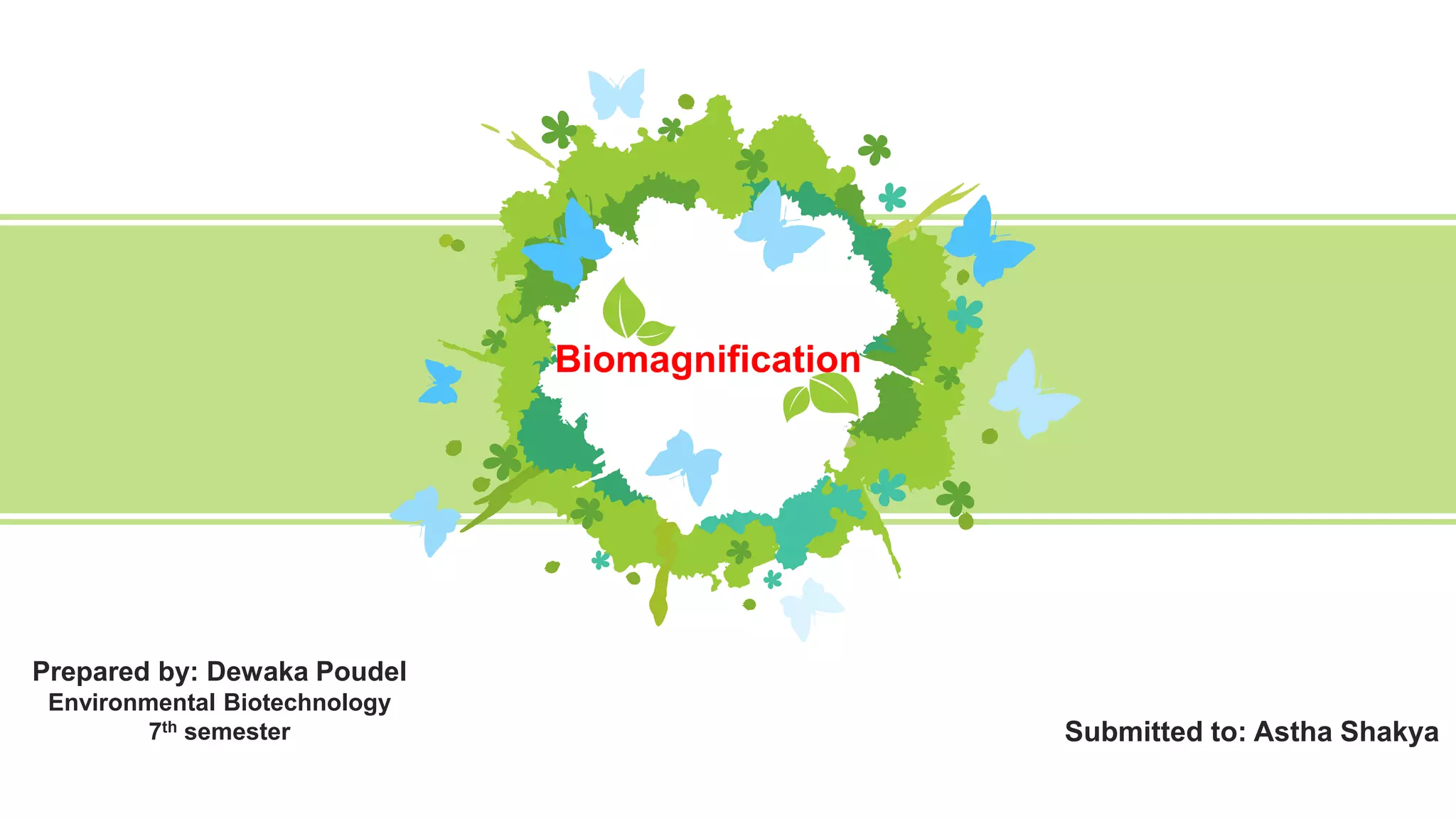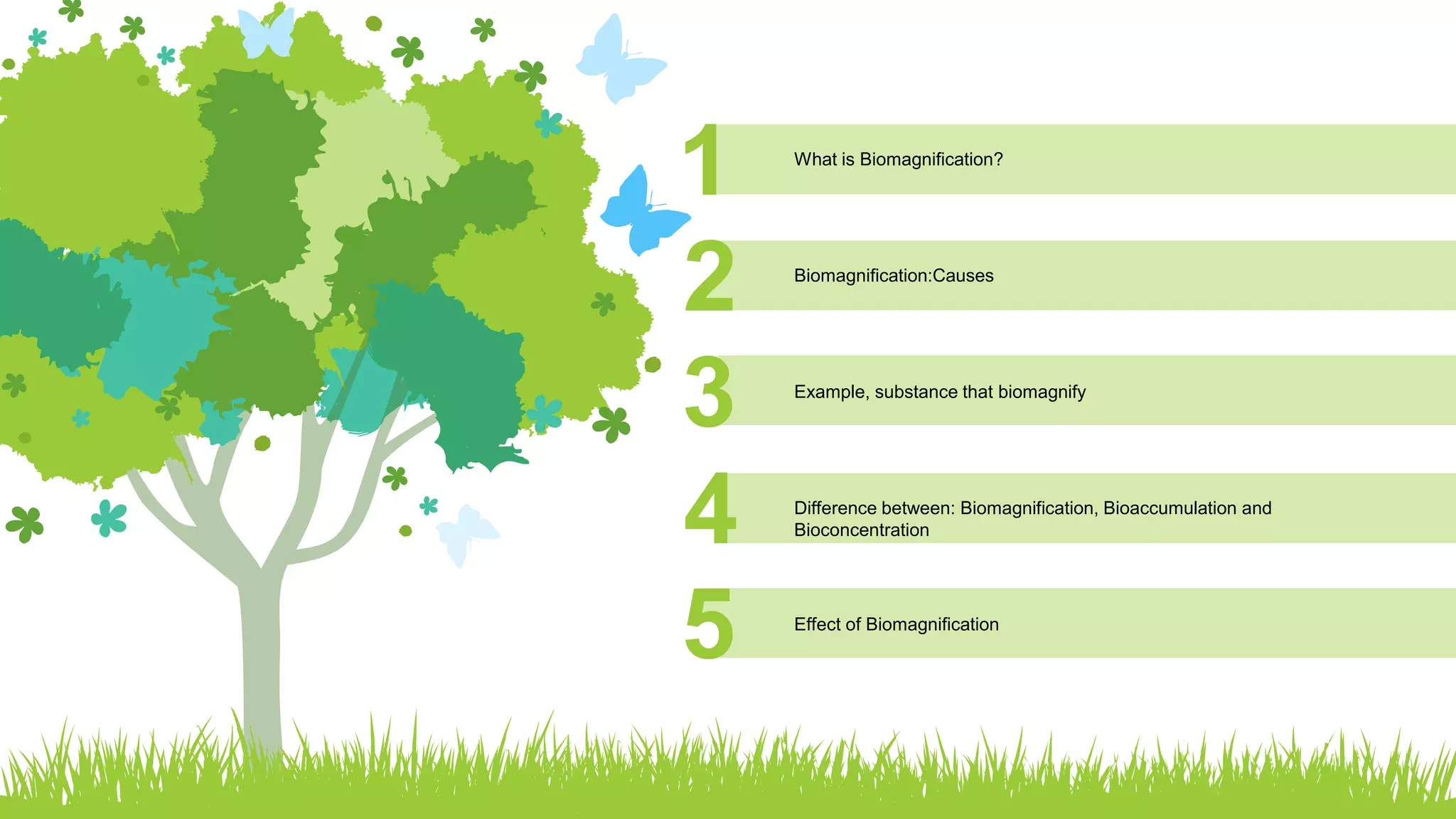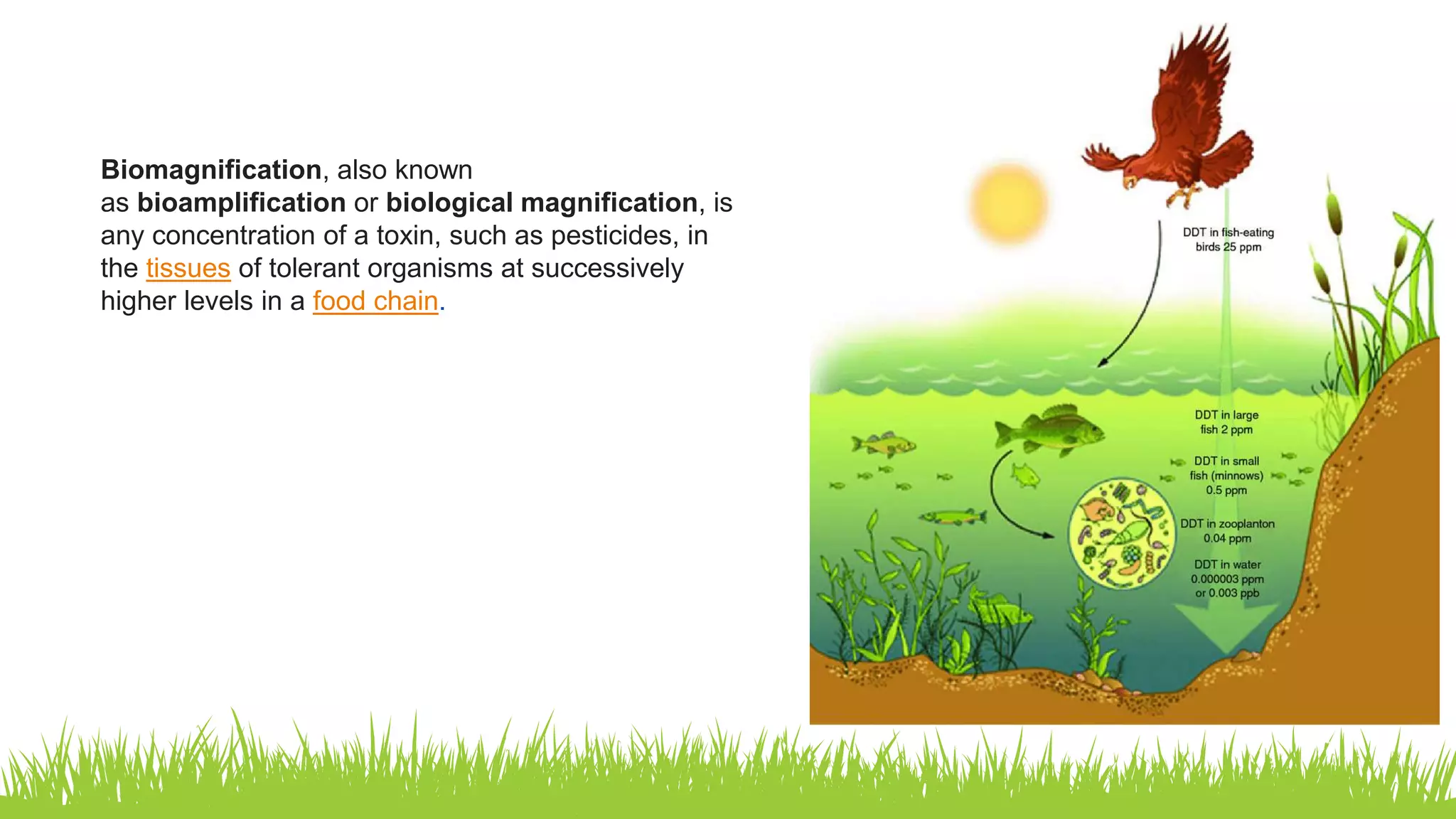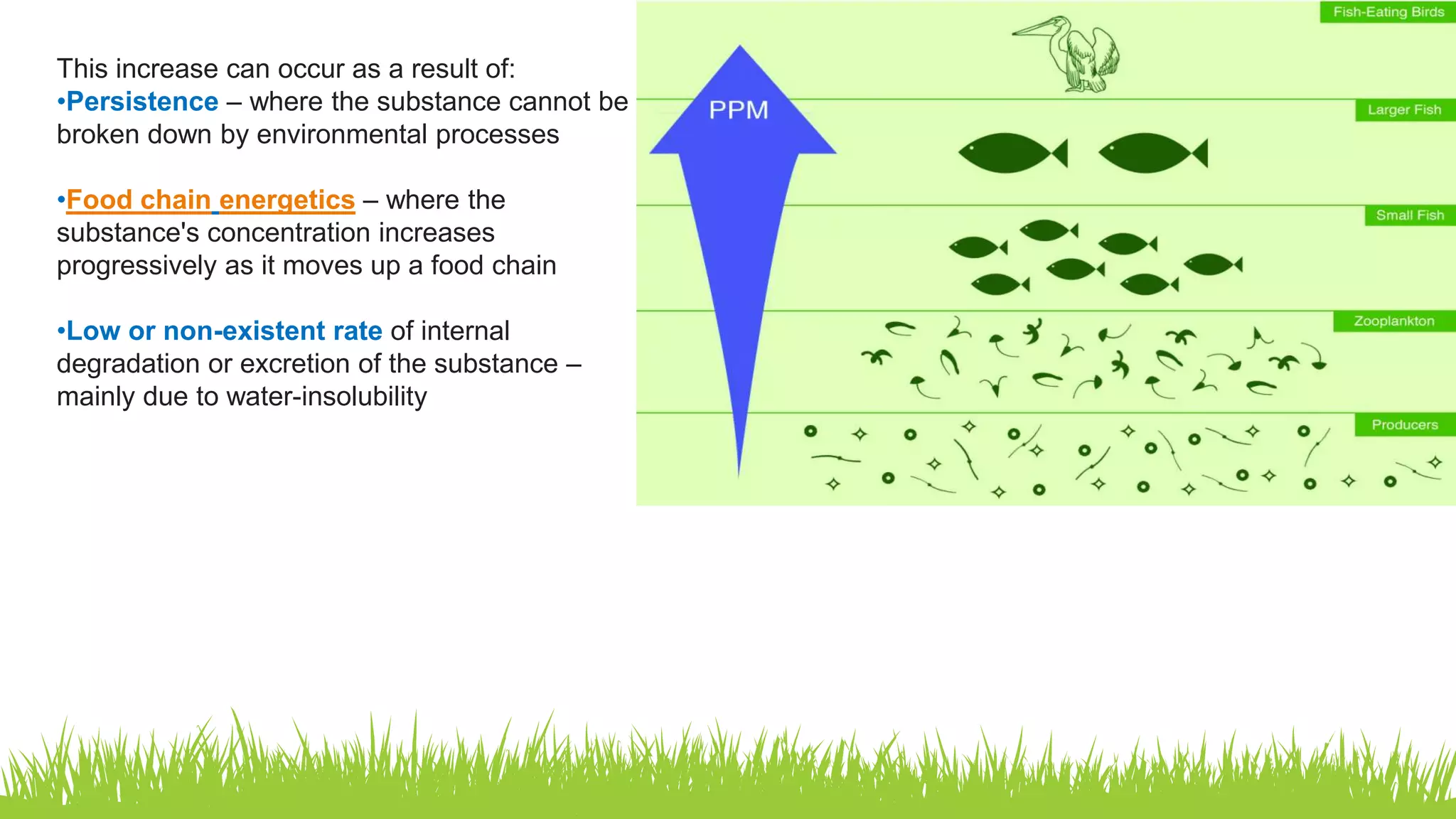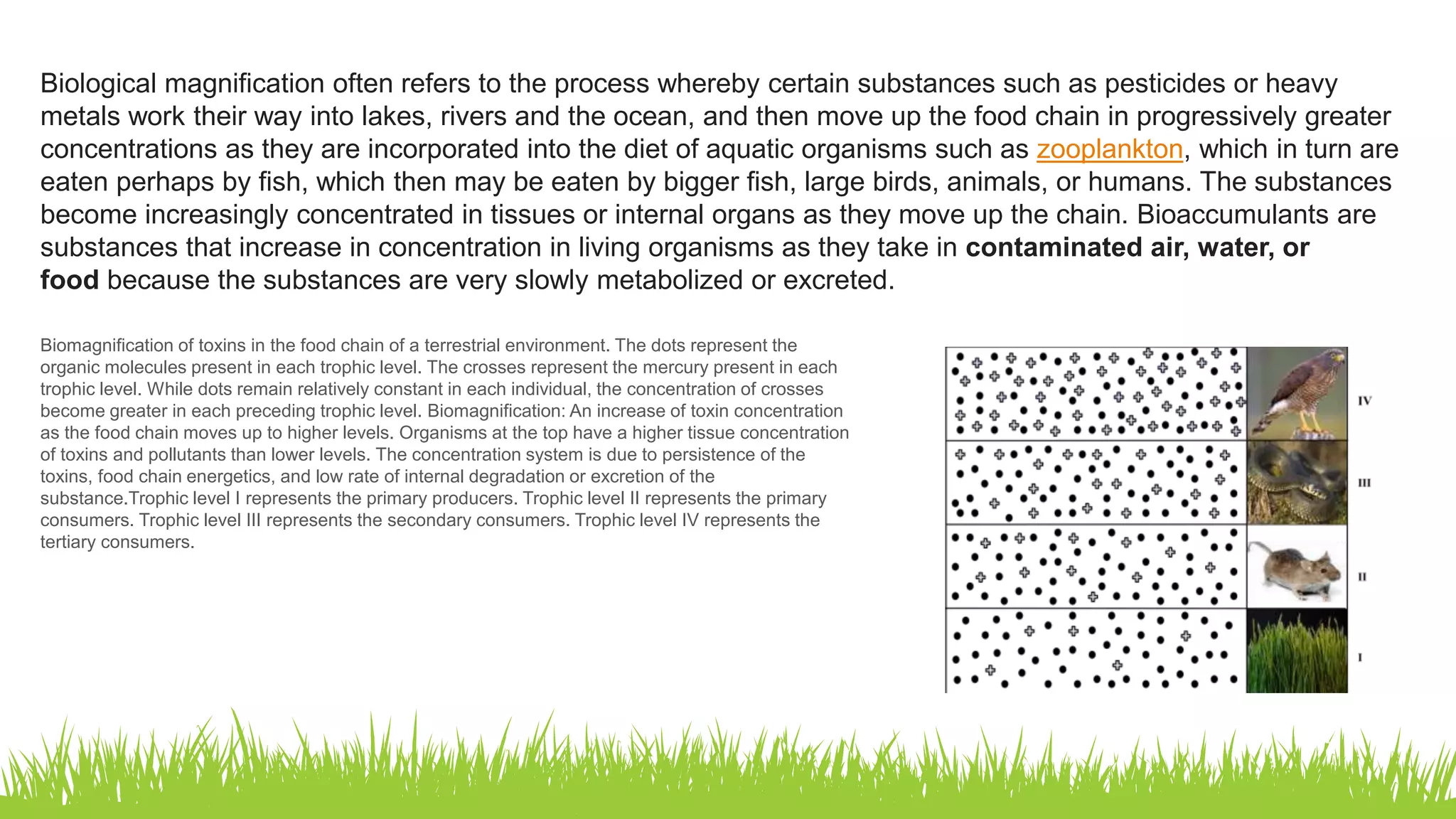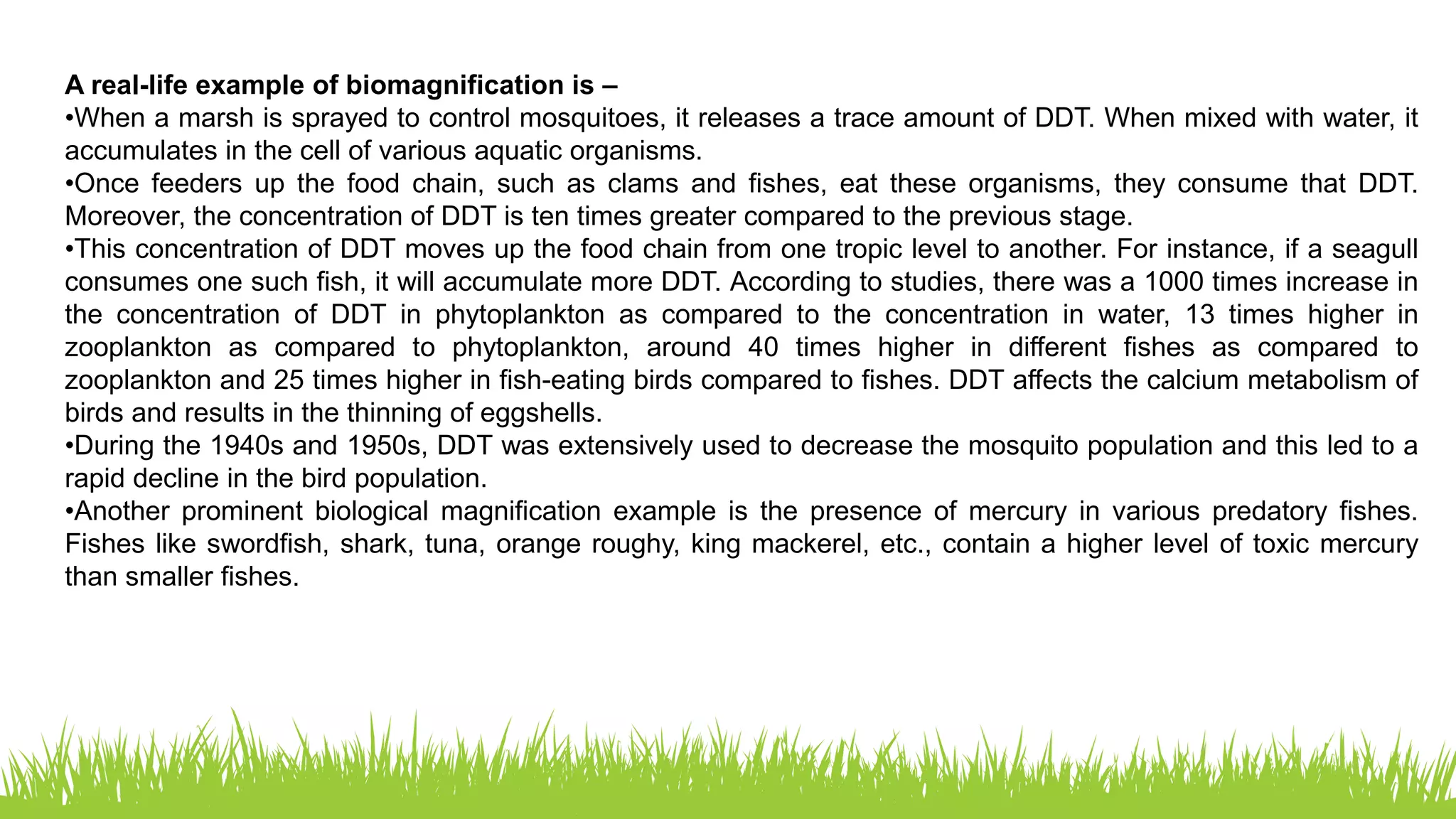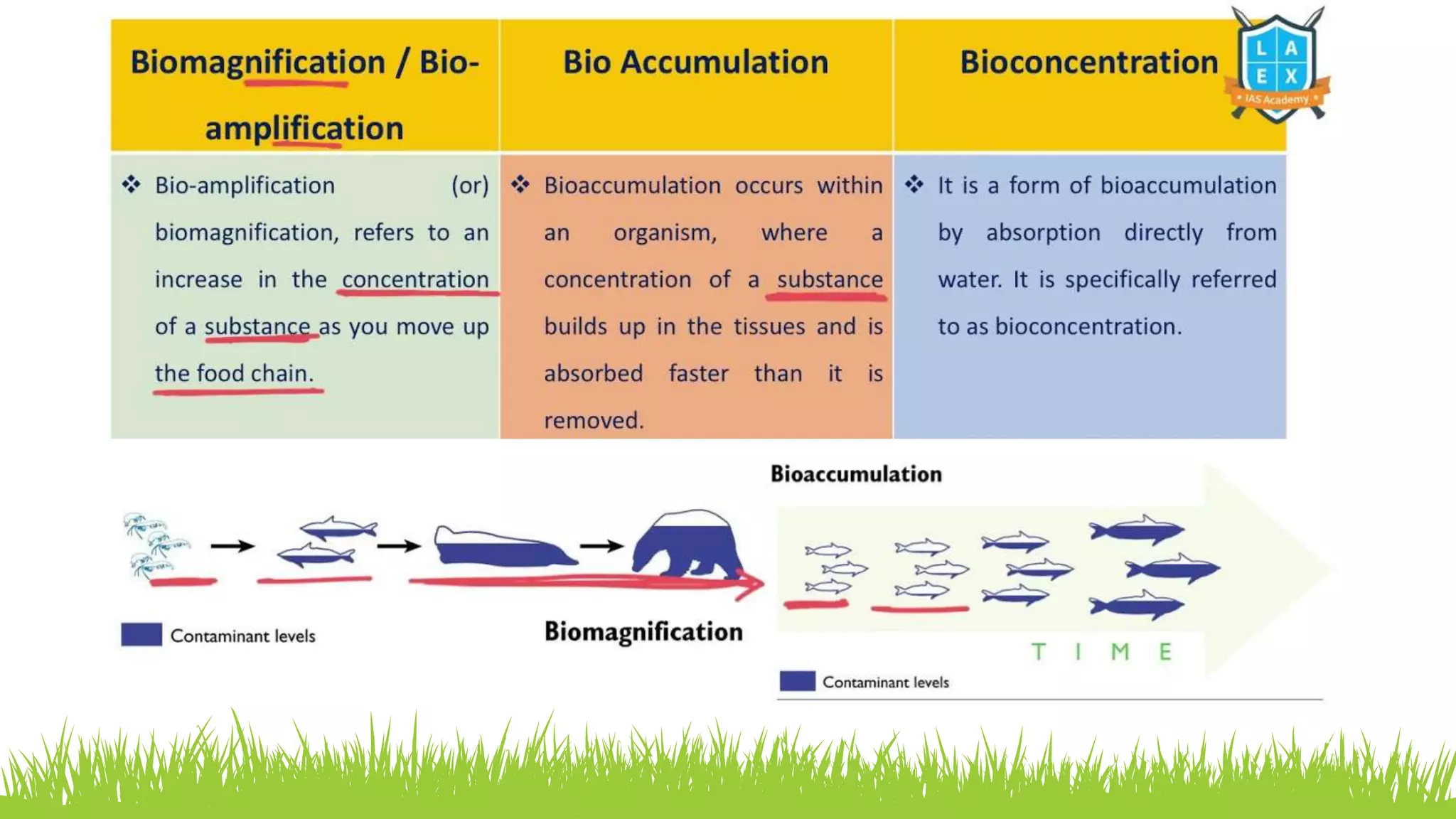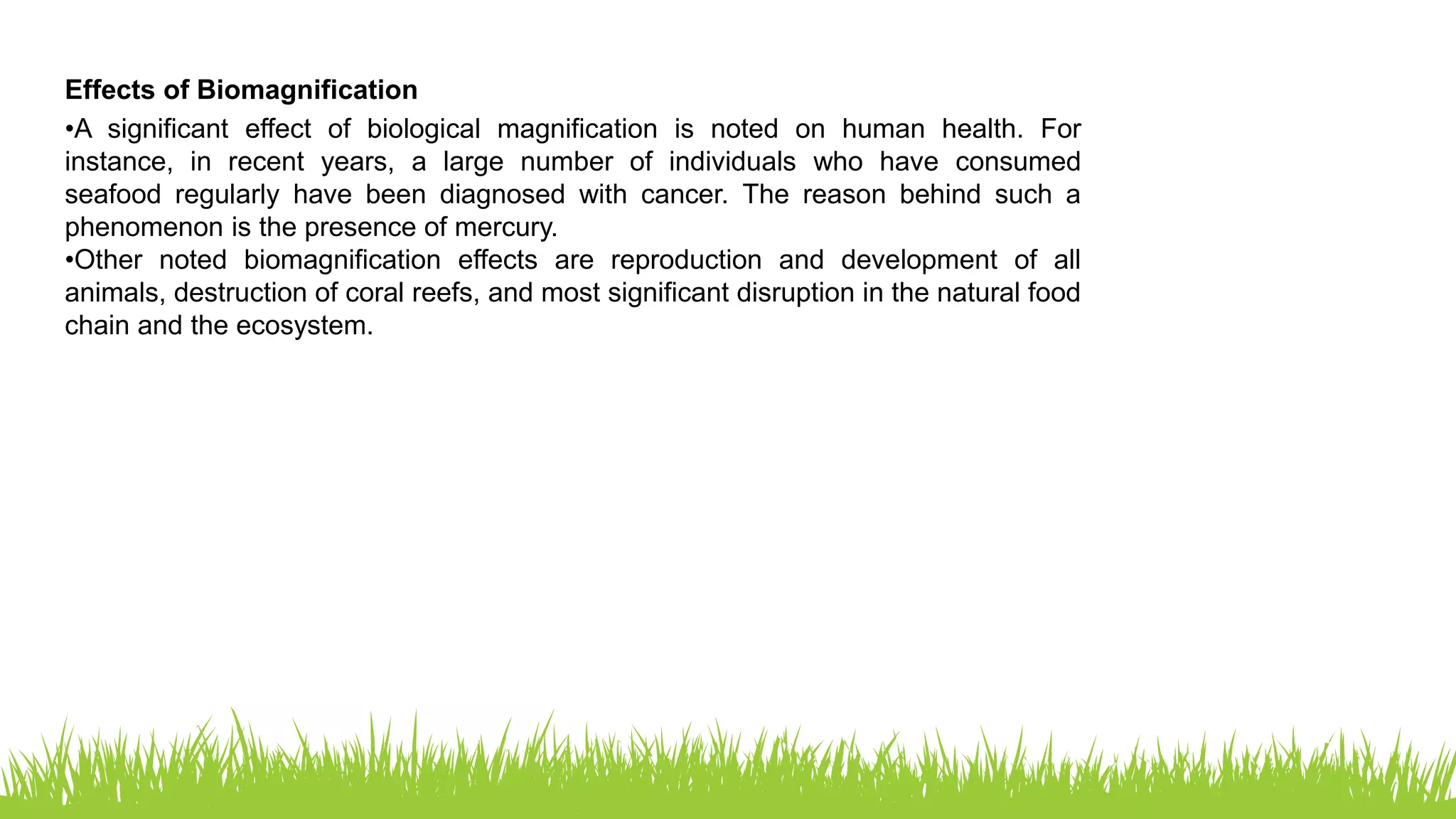Biomagnification is the process by which toxins, such as pesticides and heavy metals, increase in concentration in the tissues of organisms at higher levels of a food chain. This phenomenon is caused by factors like the persistence of substances, food chain energetics, and low rates of degradation or excretion. Its effects include negative impacts on human health, wildlife reproduction, and overall disruption of ecosystems.
